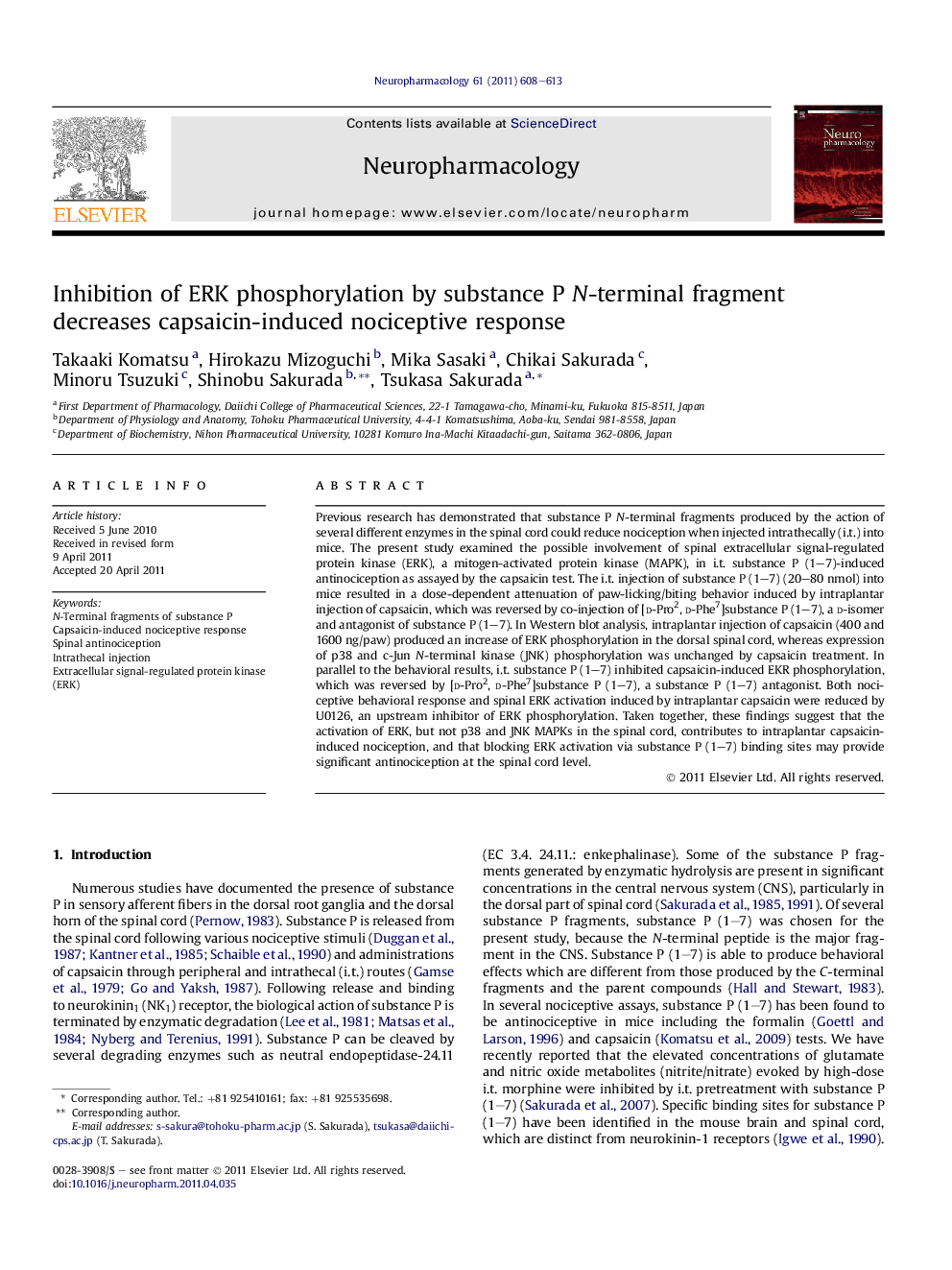| کد مقاله | کد نشریه | سال انتشار | مقاله انگلیسی | نسخه تمام متن |
|---|---|---|---|---|
| 2493859 | 1115533 | 2011 | 6 صفحه PDF | دانلود رایگان |

Previous research has demonstrated that substance P N-terminal fragments produced by the action of several different enzymes in the spinal cord could reduce nociception when injected intrathecally (i.t.) into mice. The present study examined the possible involvement of spinal extracellular signal-regulated protein kinase (ERK), a mitogen-activated protein kinase (MAPK), in i.t. substance P (1–7)-induced antinociception as assayed by the capsaicin test. The i.t. injection of substance P (1–7) (20–80 nmol) into mice resulted in a dose-dependent attenuation of paw-licking/biting behavior induced by intraplantar injection of capsaicin, which was reversed by co-injection of [d-Pro2, d-Phe7]substance P (1–7), a d-isomer and antagonist of substance P (1–7). In Western blot analysis, intraplantar injection of capsaicin (400 and 1600 ng/paw) produced an increase of ERK phosphorylation in the dorsal spinal cord, whereas expression of p38 and c-Jun N-terminal kinase (JNK) phosphorylation was unchanged by capsaicin treatment. In parallel to the behavioral results, i.t. substance P (1–7) inhibited capsaicin-induced EKR phosphorylation, which was reversed by [d-Pro2, d-Phe7]substance P (1–7), a substance P (1–7) antagonist. Both nociceptive behavioral response and spinal ERK activation induced by intraplantar capsaicin were reduced by U0126, an upstream inhibitor of ERK phosphorylation. Taken together, these findings suggest that the activation of ERK, but not p38 and JNK MAPKs in the spinal cord, contributes to intraplantar capsaicin-induced nociception, and that blocking ERK activation via substance P (1–7) binding sites may provide significant antinociception at the spinal cord level.
► Intraplantar capsaicin induces licking/biting behavior.
► Intrathecal substance P (1–7) attenuates capsaicin-induced nociception.
► Intrathecal substance P (1–7) inhibits spinal ERK phosphorylation.
► Substance P (1–7) effect depends on the inhibition of ERK activation.
Journal: Neuropharmacology - Volume 61, Issue 4, September 2011, Pages 608–613